Mission Zero: Bid to save Australia’s marine habitats with blue carbon
A growing band of recreational fishers have taken it upon themselves to put back into the lakes much more than they will ever take out.
Environment
Don't miss out on the headlines from Environment. Followed categories will be added to My News.
Michael Guest’s memory is as clear as the Swansea Channel’s water was muddy – him strutting up the sand, chest barrelled out, with a massive flathead in his arms.
The then 14-year-old had just speared the beauty in the infamous mouth of Lake Macquarie and was on his way to show off his prize when an old salt fronted him.
“I was thinking this thing is big, how good is this and I remember walking up the beach with a bit of pride,’’ Mr Guest said.
“This old guy said ‘that’s a big flathead’ and I said it was the biggest I had ever seen.
“And he said ‘you realise that is a big breeding female who would have put thousands of eggs back into the water’.
“That has always stayed with me.’’
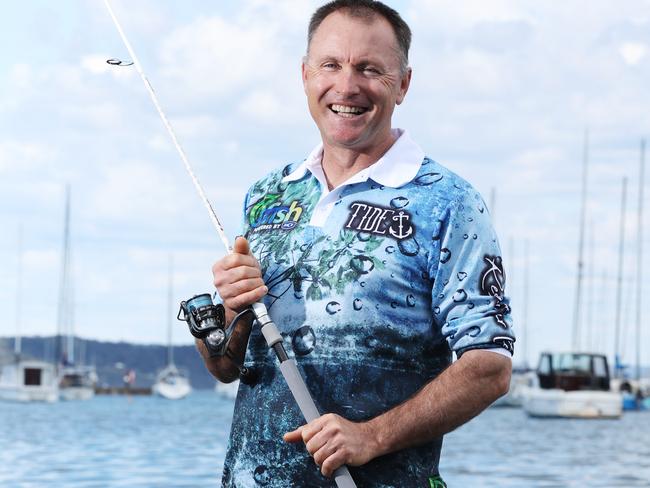
More than 30 years on, Mr Guest is one of a growing band of recreational fishers who have taken it upon themselves to put back into the lakes and estuaries much more than they will ever take out.
And it is a lot more than just the old catch and release caper. It is all about habitat, sustainability and the future.
Sometimes that means things that may not appear too sexy for a person with a rod and reel – like seagrass.
Mr Guest, a born and bred Lake Macquarie man who now lives in Eleebana, is one of a team of fishos who are on the lookout for small sprigs of a special seagrass every time they wet a line.
And it isn’t for bait.
These little sprigs may represent the future of fish stocks, with researchers teaming up with the anglers in a bid to re-bed sea floors with the highly-important seagrass species posidonia.
And with the end of the Covid-19 enforced lockdown, Operation Posidonia will again dip its toes in the water.
The operation, which is a partnership with University of NSW researchers of OzFish, plans is to have anglers collect posidonia seagrass sprigs that may have become dislodged and place them in a storage net so scientists can revegetate areas where it has been lost.
And those areas are vast.
Research has shown that over a five-year period to 2014, about 40% of posidonia seagrass has been lost in Lake Macquarie.
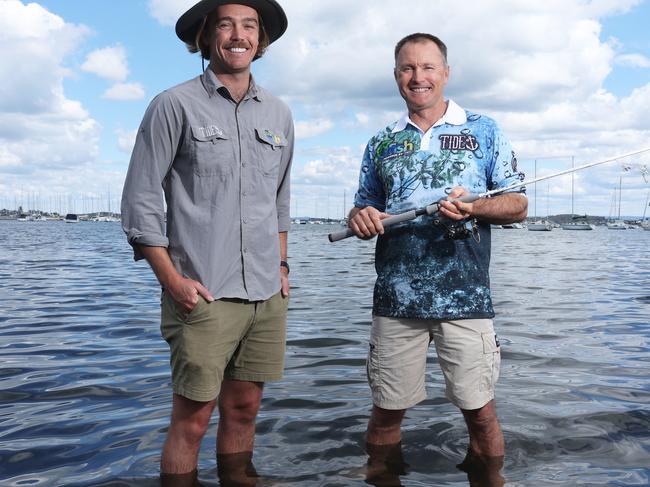
“It is pretty crazy when you think about it, we are losing about 1.5% of this type of seagrass across the state each year,’’ OzFish’s NSW coast project manager Angus Fanning said.
Although seagrass covers less than 0.2% of the world’s oceans, they have the ability to capture and store about 10% of the carbon stored in ocean sediment annually.
Seagrasses can also bury carbon at a rate 35 times faster than tropical rainforests.
“The seagrasses are key. If you look at what lives in sand and what lives in seagrasses, it is like comparing what lives in a grass paddock versus a rainforest,’’ Mr Guest said.
“We need to remember that what lives among these big skyscrapers is our future.’’
And that is where the amateur fishos come in – helping to boost areas where posidonia seagrass has declined or even been completely lost due to anchorages and propeller damage.
“We have a great community of recreational fishers here at Lake Macquarie,’’ Mr Fanning said.
“They know that if you are taking the resources and continue to take the resources then they need a helping hand.
“If you are fishing, if you are swimming or surfing – it is all affecting the resource.’’
And, as Mr Guest said, it is the continuing nature of the way anglers think about their natural surrounds.
“It used to be a pissing competition, that somehow having the biggest fish on the cleaning table made you the better fisherman,’’ he said.
“But everyone has a high resolution camera in their pockets these days so they can upload the pictures to show their mates without having to take the fish.
‘’Things change and we need to adapt as well.’’
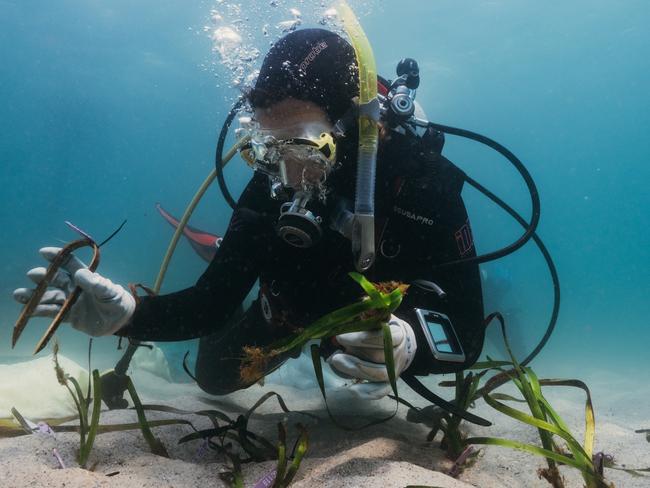
Other programs are bringing marine habitats literally back from the dead.
In Queensland’s Moreton Bay shellfish reefs are considered functionally extinct and so
OzFish volunteers have been collecting, washing, and preparing tonnes of used oyster shells
for the past four years to re-establish reefs that were once thriving.
An almost 20 hectare site provided by the Port of Brisbane has been approved for
restoration in which volunteers will deploy the first “Robust Oyster Baskets” — essentially
base structures for the shellfish developed alongside local school students. More than
50,000 of these will be placed in the bay over the next six years.
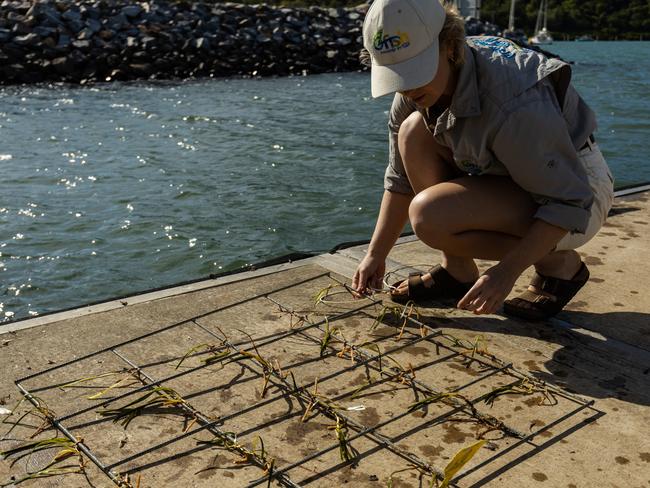
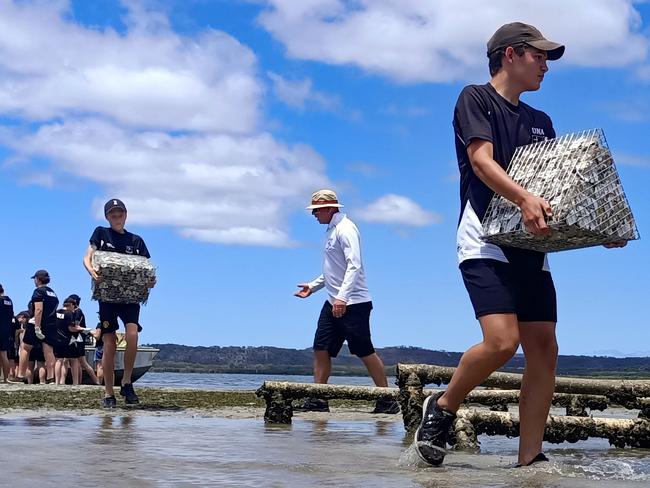
This project will rejuvenate aquatic life, improve fishing and fish productivity, seagrass growth and biodiversity, with every hectare of living shellfish reef
producing an additional 2.5 tonnes of harvestable fish every year.
OzFish is also restoring mangrove forests around Victoria’s Westernport Bay, with a goal of
100 hectares to be restored.
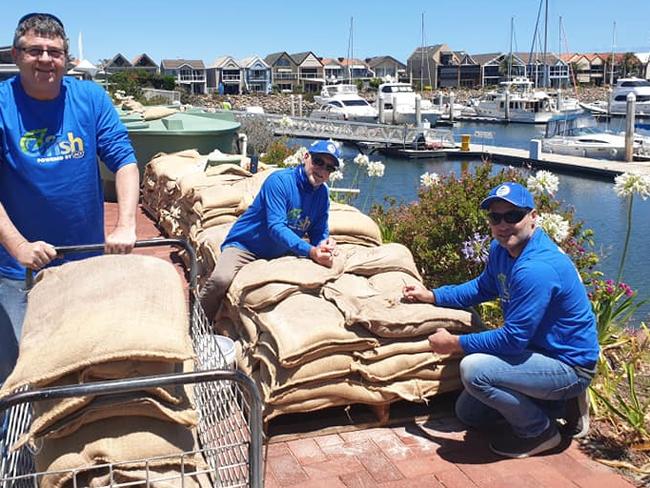
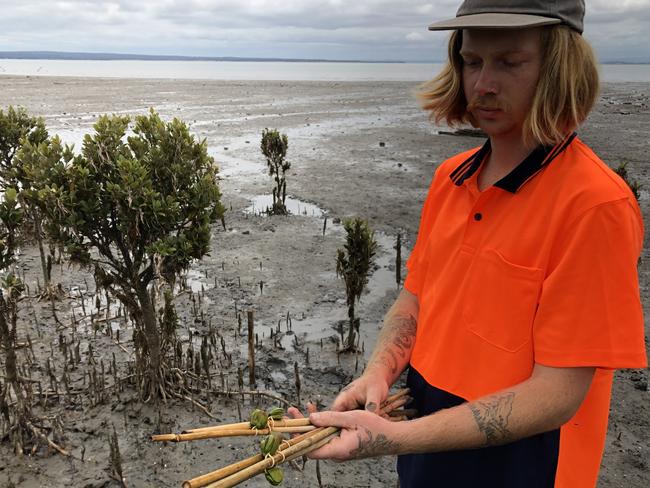
These mangroves are a major store and supply of biomass and nutrients, forming the base
of the food chain. Recent studies have collected over 37 fish species in the mangroves of
Westernport.
There is also a major seagrass project at Adelaide’s Gulf of St Vincent.
Seagrass is one of the most efficient carbon systems to rehabilitate in Australia, even more
effective than rainforests. The project involves harvesting fruit from Adelaide metropolitan
beaches, processing the fruit extracts seeds, sewing the seeds into sandbags and deploying
the sandbags to Gulf St Vincent to restore seagrass meadows.
OzFish are also embarking on a giant kelp restoration project in Tasmania.
Originally published as Mission Zero: Bid to save Australia’s marine habitats with blue carbon
Read related topics:Mission Zero




